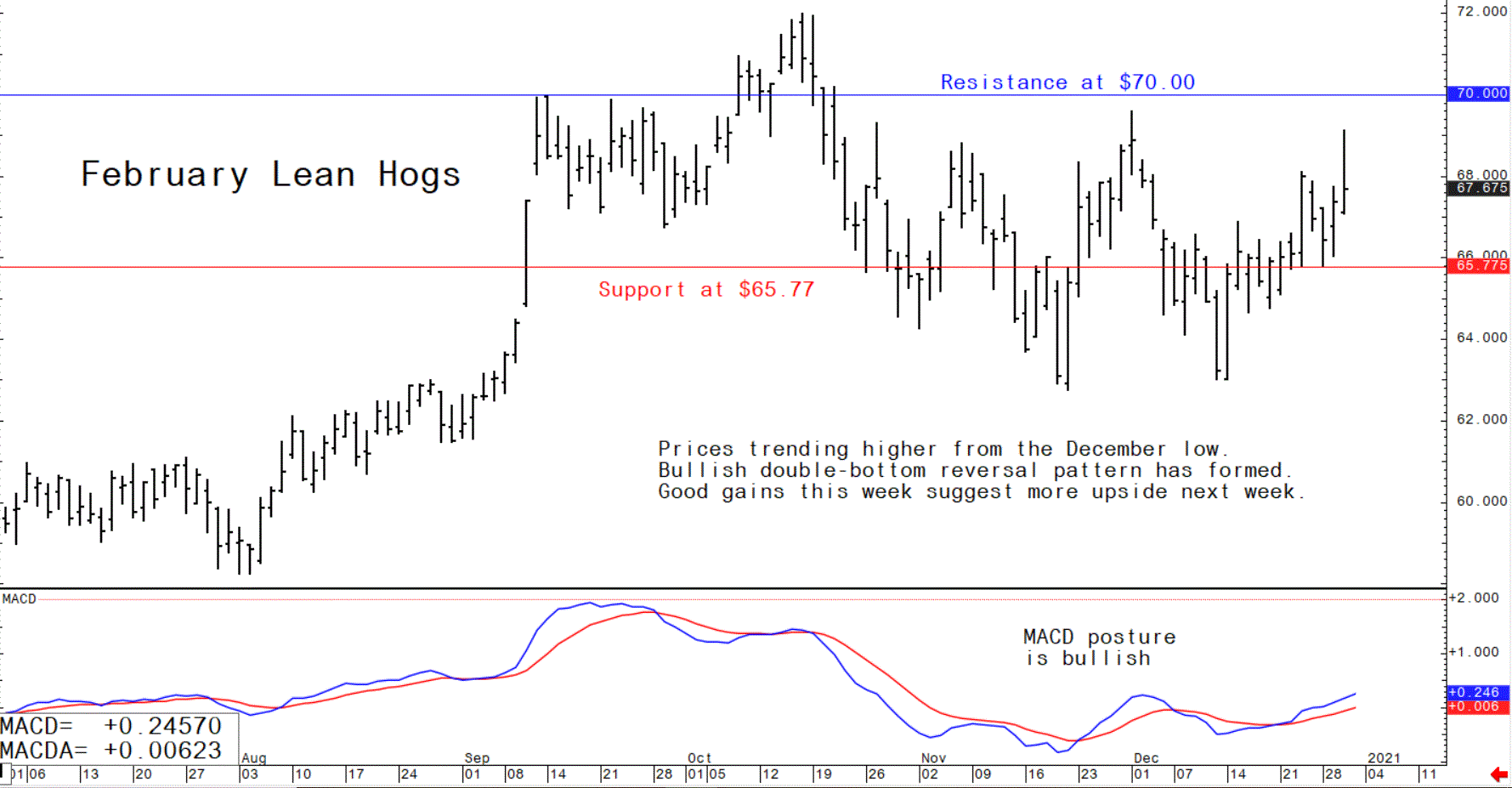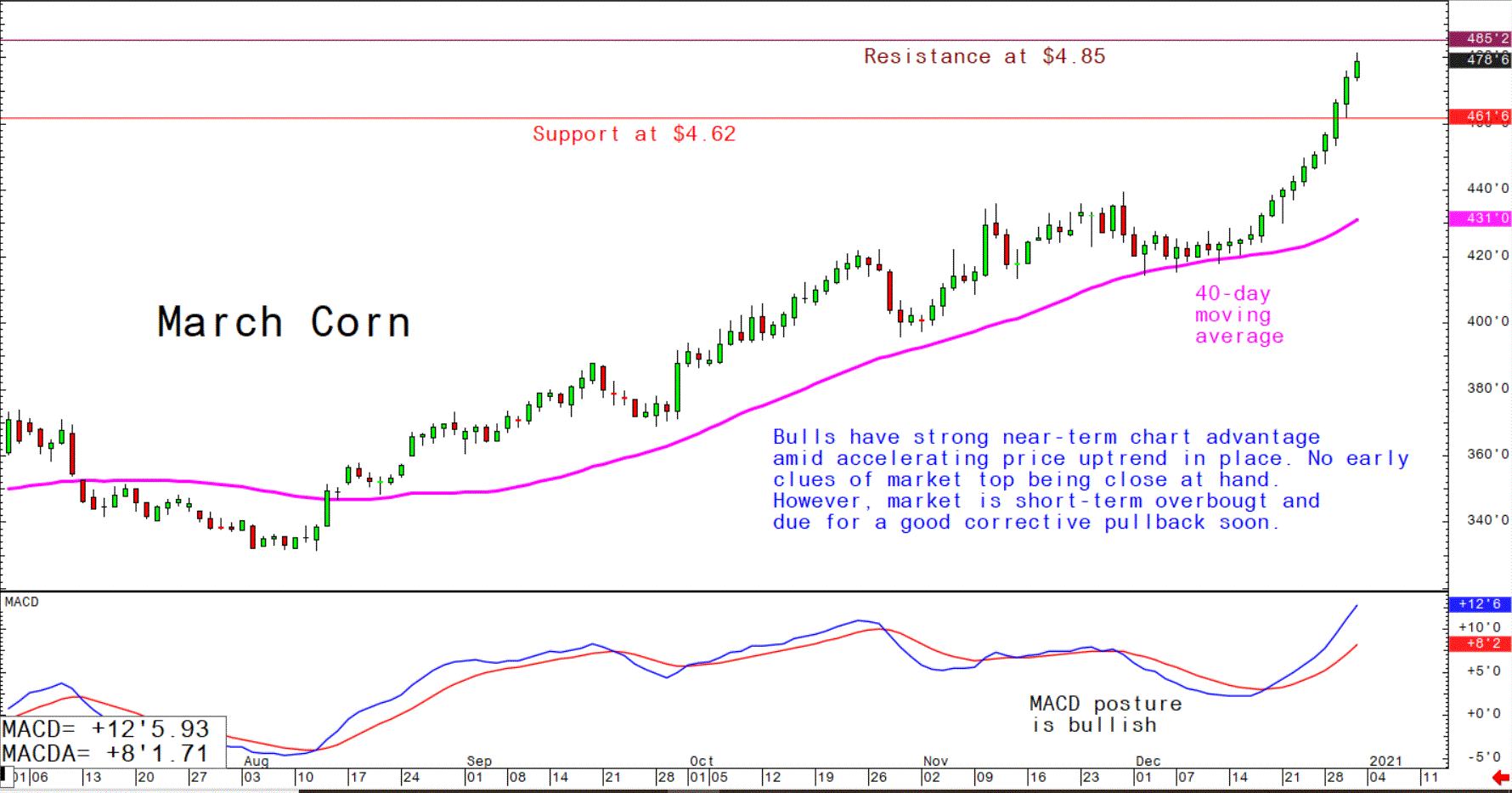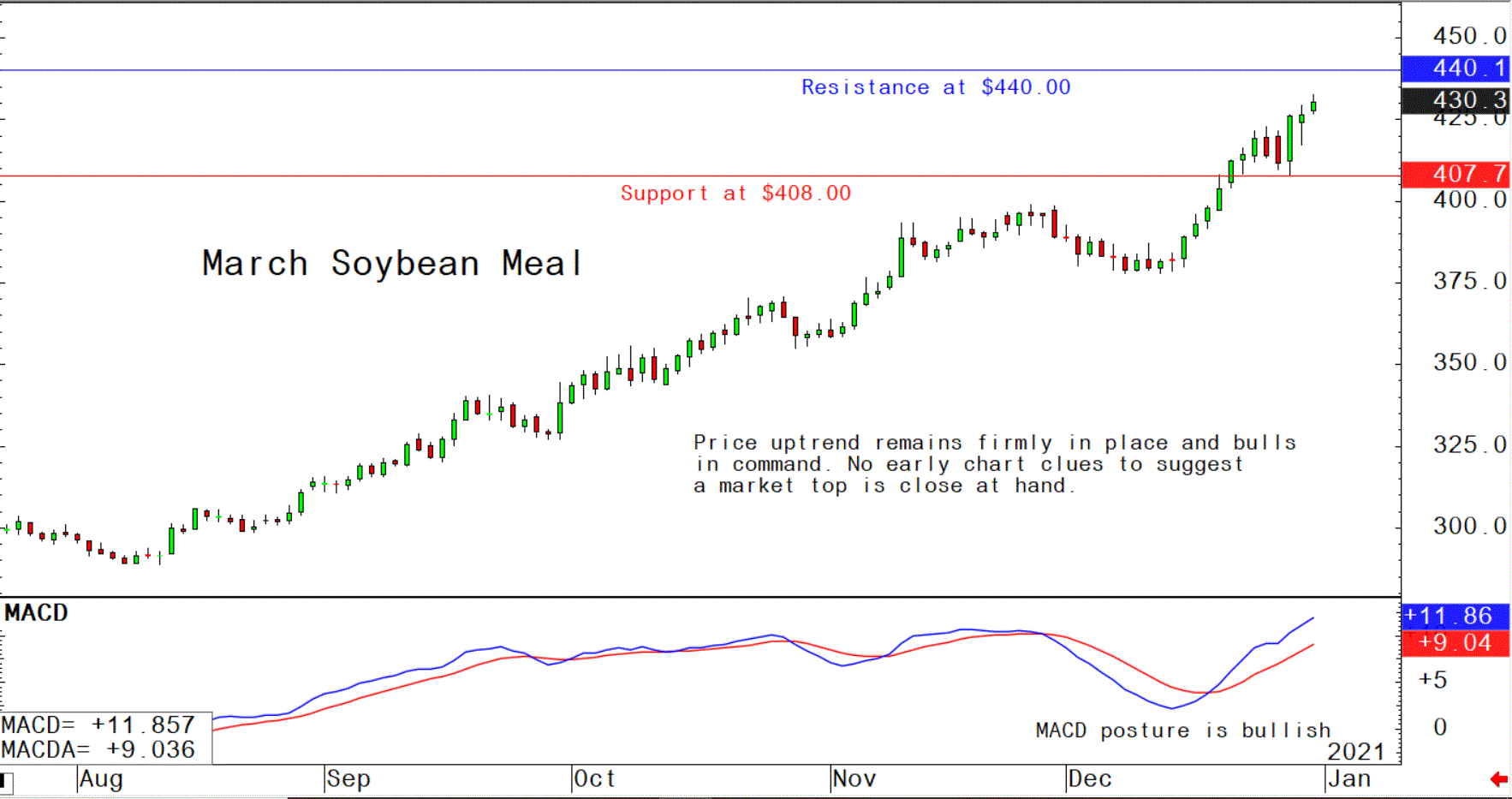



Pig outlook: Futures market suggesting more upside price action
It was not a bad week for the lean hog futures market as prices notched a four-week high and have been trending up from the November low.
The pig traders’ perspective:
It was not a bad week for the lean hog futures market as prices notched a four-week high and have been trending up from the November low. The near-term technical posture for the futures market remain in favor of the bulls. Weaker cash hog prices have helped strengthen pork packer profit margins. HedgersEdge.com reports they have risen $11.55 over the past week to $33.05 a head.
The recent bullish USDA Hogs & Pigs and Cold Storage reports have helped the lean hog market to post gains. The hog futures market will be watching the CME lean hog index and fresh pork markets for confirmation of seasonal lows, which could help lean hog futures to mount an even stronger rally in the coming weeks.
Latest US Department of Agriculture (USDA) reports, and other news
U.S. pork sales drop in latest week
U.S. pork net sales of 7,700 metric tons (MT) reported for 2020 were down 53 percent from the previous week and 73 percent from the prior 4-week average. Increases primarily for Mexico (10,300 MT, including decreases of 900 MT), El Salvador (1,700 MT), China (1,600 MT, including decreases of 4,000 MT), Japan (900 MT, including decreases of 3,000 MT), and Canada (500 MT, including decreases of 400 MT), were offset by reductions primarily for South Korea (4,200 MT), Chile (1,800 MT), and Colombia (700 MT). For 2021, net sales of 46,300 MT were primarily for China (22,700 MT), South Korea (5,800 MT), Japan (4,000 MT), Mexico (3,800 MT), and Colombia (2,100 MT).
Exports of 39,400 MT were down 3 percent from the previous week and 1 percent from the prior 4-week average. The destinations were primarily to Mexico (13,400 MT), China (13,300 MT), Japan (4,100 MT), South Korea (2,300 MT), and Canada (1,500 MT).
Beef: U.S. net sales of 14,900 MT reported for 2020 were up noticeably from the previous week and up 82 percent from the prior 4-week average. Increases were primarily for Japan (3,900 MT, including decreases of 1,100 MT), China (3,100 MT, including decreases of 300 MT), South Korea (2,900 MT, including decreases of 200 MT), Mexico (1,500 MT, including decreases of 200 MT), and Canada (900 MT, including decreases of 100 MT). For 2021, net sales of 14,400 MT were primarily for South Korea (9,800 MT), Taiwan (2,300 MT), Japan (700 MT), the Philippines (400 MT), and Canada (300 MT). Exports of 27,600 MT--a market-year high--were up noticeably from the previous week and up 63 percent from the prior 4-week average. The destinations were primarily to Japan (6,900 MT), South Korea (6,200 MT), China (4,400 MT), Mexico (4,300 MT), and Taiwan (1,900 MT).
China to release more pork from its reserves leading up to holiday festivities
China will release more meat from its frozen reserves leading up to its peak Lunar New Year consumption period, Commerce Ministry Spokesman Gao Feng said at a news briefing this week. China sold 20,000 MT of pork from its reserves this week and the same amount the week prior after a hiatus in these sales since September.
Chinese pork prices climb
Between Dec. 21 and Dec. 25, China’s average pork price index across 16 provincial-level regions edged 0.5% higher to 43.16 yuan (roughly $6.60) per kilogram as the country prepares for its Lunar New Year Celebrations. This was down just 1.9% from last year’s elevated level, a 0.6-point narrowing of the discount from the week prior, according to Xinhua.
China has actively worked to fuel expansion of its herd after African swine fever, importing pork and other meat to tame food price inflation in the meantime. The country recently indicated it had restored its herd to 90% of pre-pandemic levels, but China’s history of fudging numbers and still-elevated pork prices make more than a few analysts skeptical. In any case, the quality of the herd is likely subpar.
Bird flu continues to spread in South Korea
South Korea has confirmed 31 cases of highly pathogenic H5N8 avian flu at local farms as well as 42 cases of bird flu in wild birds since late October. Despite the quick spread, the country’s ag ministry says the domestic market for poultry remains stable and the number of culled birds has only had a limited impact on supply. Since Tuesday, around 9.8 million birds have been culled.
Chinese meat association recommends suppliers should disinfect cold-chain meat products
Chinese meat importers and processors are calling on countries with Covid-19 outbreaks to increase scrutiny of shipments before shipping out meat, noting its detection of the virus on cold chain products “many times.”
Gao Guan, a spokesman for the China Meat Association, said, “It should be better to handle this (virus control) at the meats exporting origins, and carry out disinfection at the production plants” as the cost would be lower, and efficiency higher.”
The group proposed exporters in Covid-impacted areas should disinfect the outer packaging of products and the inner side of containers before sealing export products. Doing so would ensure food safety and raise consumer confidence about cold-chain products, the meat association said. The World Health Organization continues to say the risk of catching Covid-19 from frozen food is low.
Agricultural details of Brexit agreement
Ambassadors from the 27 members of the European Union approved the EU/U.K. free trade deal Dec. 28. EU governments are expected to formally ratify the agreement. This marks the beginning of the ratification process of the trade deal. The U.K. House of Commons is expected to vote on the agreement on Dec. 30, with the European Parliament to follow in January. The deal will enter into force provisionally on Jan. 1.
Agriculture details of Brexit agreement:
- Trade of farm goods will benefit from the zero-tariff, zero-quota terms between the two sides. But the lack of an equivalence agreement on phytosanitary rules means shippers will face new hurdles at the border.
- No tariffs: The lack of levies is “especially important“ for the agriculture and fishing sector, as some meat and dairy products would have faced taxes topping 40% under WTO terms, according to the EU.
- Extra checks: U.K. agri-food consignments will have to have health certificates and undergo sanitary and phytosanitary controls at member states’ border inspection posts.
- Both sides will be able to maintain their own sanitary standards going forward.
- Food and agricultural products entering Northern Ireland from Great Britain will be subject to checks and phytosanitary controls.
The next week’s likely high-low price trading ranges:
- February lean hog futures--$65.00 to $70.00, and with a sideways-higher bias
- March soybean meal futures--$420.00 to $440.00, and with a sideways-higher bias
- March corn futures--$4.65 to $5.00, and a sideways-higher bias
Latest analytical daily charts lean hog, soybean meal and corn futures











